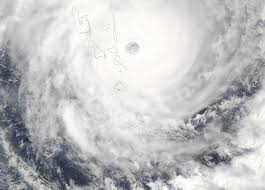PORT VILA, 24 OCTOBER 2018 (VANUATU DAILY POST) – While the Pacific region is forecasted to have 7 to 11 cyclones in the 2018/2019 tropical cyclone season, Vanuatu alone is expecting at least two cyclones.
The cyclone season in Vanuatu begins next month, November to April next year. However, tropical cyclones can also form outside this six-month period.
An example of cyclone forming outside the cyclone season is TC Liua last month, before the region cyclone outlook was put together.
Vanuatu is located in the hot spot of tropical cyclone activity in the region. Each year Vanuatu and New Caledonia experience the greatest cyclone activity with at least two to three cyclones passing close to their vicinity.
Tropical cyclone activity is at its peak in Vanuatu during the months of December to February but highest in January.
Cyclones expected to hit Vanuatu this season are likely below category 5.
As Vanuatu is about to enter into its summer months commencing with the cyclone season, the Vanuatu Meteorology and Geo-Hazards Department (VMGD) through its Climate Division has declared a 70% chance of a weak El Niño developing by the end of this year and will continue through to 2018.
If this happens, it will last for a short period and can lead to an intense dry season next year, said Principal Scientific Officer at the Climate Division, Robson Silas. Vanuatu has already been facing drought conditions.
The lack of rainfall over the past several months have already been affecting water and food security.
El Niño means there will be less rainfall and the place will be much drier.
The Climate Division urged everyone to use and manage water wisely now onward because this El Niño could bring severe impact.
Principal Scientific Officer Silas said: “The El Niño is expected to develop anytime soon and will cool down by March next year, the usual cut-off period in an El Niño cycle.
“Its impacts will be felt after several months”.
Vanuatu has experienced El Niño events before.
The worst one was after cyclone Pam which lasted through to 2016.
Silas explained that during an El Niño, warm water in the Pacific ocean spreads over a large area from the west to the east along the equator resulting to changes in weather patterns and climate.
“With the shift of these ocean warm water, any depression or tropical cyclones affecting Vanuatu will develop from the east, near Fiji and Cook Islands.
“Cyclone Pam and Winston are products of El Niño events,” he added.






